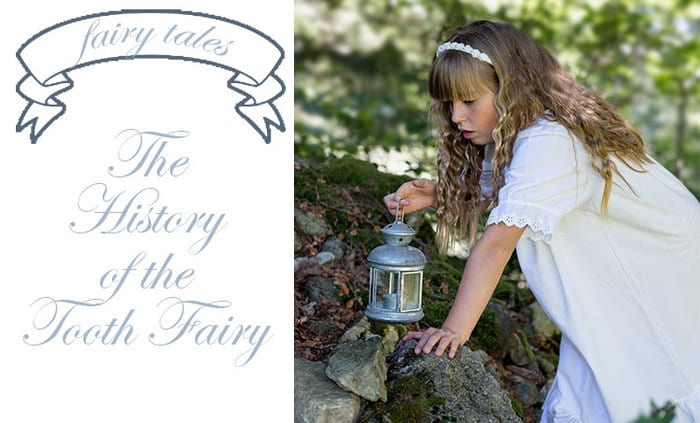Do you know the real history of the tooth fairy? Depending on which part of the world you are in, the history of the tooth fairy can change quite a bit. The story of the tooth fairy generally goes like this: When a child loses one of their baby teeth, they place it under the pillow and the tooth fairy will visit them while they sleep, and leave a small payment in exchange for their tooth. The tradition of leaving the tooth under the pillow is typically part of the folklore of the United States, Britain, Canada, Australia, New Zealand and other English-speaking countries. If you go back in history, you will find that traditionally people used to bury the baby teeth rather than keep them under the pillow.


First Appearance of the Tooth Fairy in Print
The tooth fairy first appeared in print in 1927. She was included in Esther Watkins’ eight-page short play for children, but there are oral references to the tooth fairy that go back much further in time. The oldest oral reference puts the tooth fairy’s arrival at the turn of the 20th century. However, rituals that are related to the tooth fairy are even older. For example, did you know that people used to throw their teeth towards the sun, into the fire, between their legs, onto or over the roof of their house, into a mouse hole, or placed in a tree or wall, all in the name of good fortune for their adult teeth? These traditions have been practiced all over the world, from Russia to South America to China, and the traditions follow the same path as the tooth fairy without the figure herself.
Tooth Fairy in Other Cultures
The tooth fairy does not always take the shape of a fairy; in fact, some of her incarnations come in the shape of animals. In France and parts of Belgium, there is a character known as La Petite Souris, which translates to “the little mouse.” La Petite Souris is a version of the tooth fairy who exchanges children’s teeth for money. In parts of the Scottish Lowlands, the tooth fairy is a white fairy rat who purchases the baby teeth with coins.
On the other side of the tooth fairy mythology, there is a tooth troll. The Finnish tooth troll, known as Hammaspeikko, is lured by eating candy and drills holes into the teeth. Brushing teeth scares the tooth troll away!
The Tooth Fairy Today
In the United States, February 28 is National Tooth Fairy Day. According to a poll done by Delta Dental Plans Association, the tooth fairy pays an average of $4.36 per tooth. In 2013, the tooth fairy only paid out around $3.50 per tooth!
One common question that parents get from their children is what the tooth fairy does with all of their teeth. Some children believe that she makes jewelry from them, and others believe she uses them to build castles up in the sky. No one really knows what the tooth fairy does with her teeth, but one thing is for sure, she appreciates the healthy teeth over the ones with cavities!
Does your family have any traditions or unique stories revolving around the tooth fairy? Share your stories with us, and remember to make an appointment with Kildaire Family & Cosmetic Dentistry to keep your teeth and your children’s teeth healthy and bright! Schedule an appointment with Dr. Brace for an individual or family-block appointment today!
